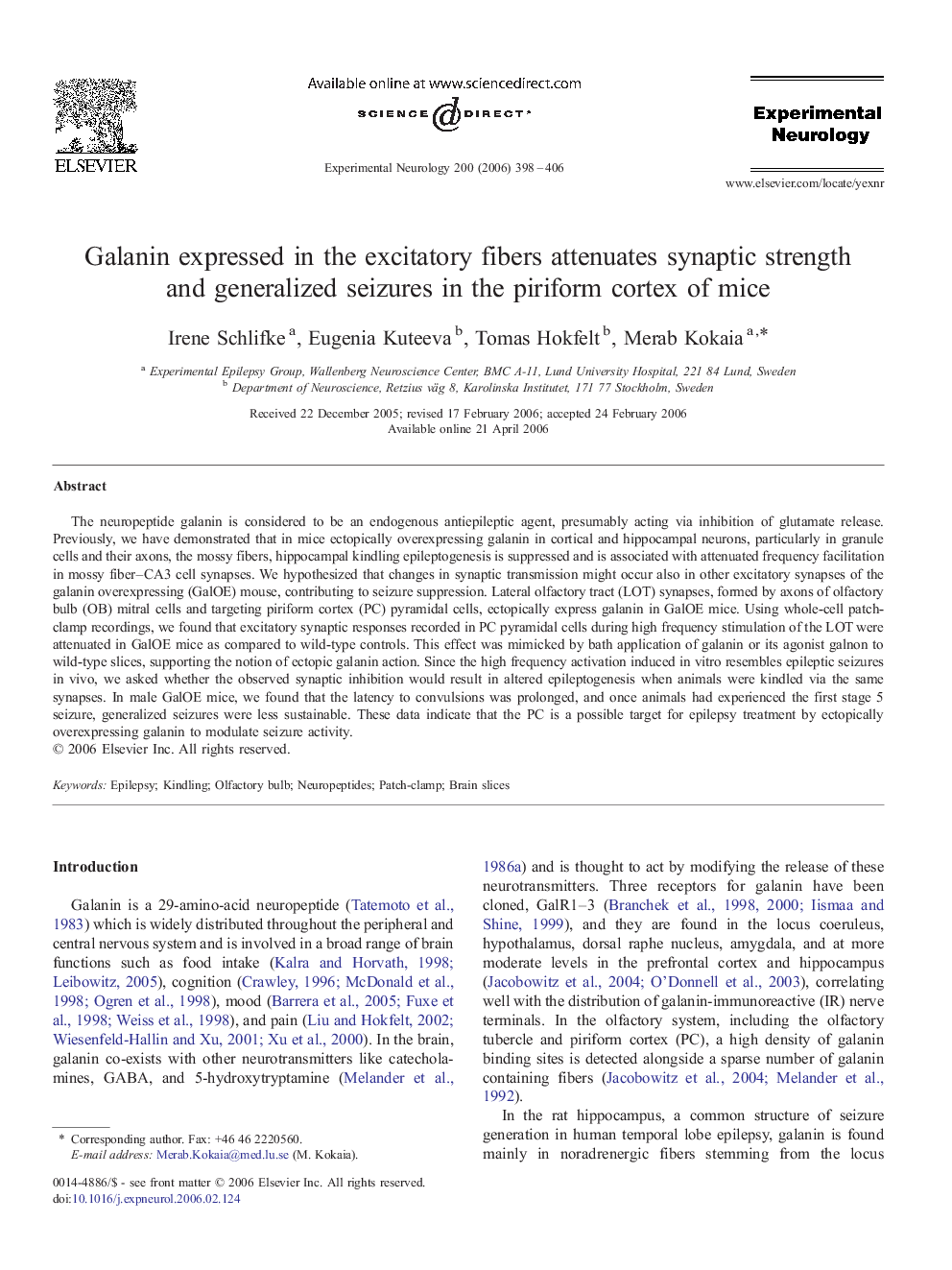| Article ID | Journal | Published Year | Pages | File Type |
|---|---|---|---|---|
| 3057076 | Experimental Neurology | 2006 | 9 Pages |
Abstract
The neuropeptide galanin is considered to be an endogenous antiepileptic agent, presumably acting via inhibition of glutamate release. Previously, we have demonstrated that in mice ectopically overexpressing galanin in cortical and hippocampal neurons, particularly in granule cells and their axons, the mossy fibers, hippocampal kindling epileptogenesis is suppressed and is associated with attenuated frequency facilitation in mossy fiber-CA3 cell synapses. We hypothesized that changes in synaptic transmission might occur also in other excitatory synapses of the galanin overexpressing (GalOE) mouse, contributing to seizure suppression. Lateral olfactory tract (LOT) synapses, formed by axons of olfactory bulb (OB) mitral cells and targeting piriform cortex (PC) pyramidal cells, ectopically express galanin in GalOE mice. Using whole-cell patch-clamp recordings, we found that excitatory synaptic responses recorded in PC pyramidal cells during high frequency stimulation of the LOT were attenuated in GalOE mice as compared to wild-type controls. This effect was mimicked by bath application of galanin or its agonist galnon to wild-type slices, supporting the notion of ectopic galanin action. Since the high frequency activation induced in vitro resembles epileptic seizures in vivo, we asked whether the observed synaptic inhibition would result in altered epileptogenesis when animals were kindled via the same synapses. In male GalOE mice, we found that the latency to convulsions was prolonged, and once animals had experienced the first stage 5 seizure, generalized seizures were less sustainable. These data indicate that the PC is a possible target for epilepsy treatment by ectopically overexpressing galanin to modulate seizure activity.
Related Topics
Life Sciences
Neuroscience
Neurology
Authors
Irene Schlifke, Eugenia Kuteeva, Tomas Hokfelt, Merab Kokaia,
